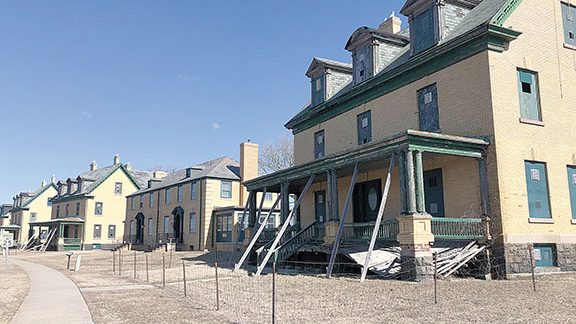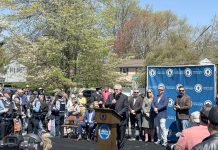
By Sunayana Prabhu
MIDDLETOWN – The Fort Hancock 21st Century Federal Advisory Committee (FACA) held a virtual meeting last month to discuss updates to the contentious leasing program on Sandy Hook’s former military post.
Returning six months after its last meeting, the committee made several recommendations, including one that the National Park Service (NPS) continue the Sandy Hook leasing program, soliciting partners in the adaptive reuse of the nationally significant former U.S. Army structures. Sandy Hook is part of the Gateway National Recreation Area. Roy Stillman, president of Stillman Development International, who is developing one of the largest parcels at the tip of Sandy Hook, presented detailed prototypes for two Officers Row buildings at the previous meeting and is awaiting estimates for “every subcomponent” of the construction work.
The most important update of the meeting seemed to be the economic viability of the project that plans to rehabilitate 21 Officers Row houses into apartments. “Very, very soon we’ll have a great deal of construction cost information, which would be instrumental in advancing the dialogue between ourselves and NPS,” Stillman said.
Karen Edelman from the Gateway National Recreation Area provided leasing updates. Seven historic buildings have been leased and are in use or being rehabilitated. The structures are being used for short- and long-term residential purposes, academic support for the Marine Academy of Science and Technology, part of the Monmouth County Vocational School District; McFly’s on the Hook, a snacks and sundries shop; and the Mule Barn, a dining and event space opening this summer.
Edelman also discussed parking considerations and the use of outdoor space by the lessees.
She said there are parking limitations at Sandy Hook and lessees do not have assigned parking, except for those driveways assigned to Officers Row buildings.
The NPS is currently in the process of obtaining a parking and traffic study to meet the needs of buildings with larger scale use, such as the Officers Club, the Mule Barn, a restaurant/pub and the old YMCA building.
While residential buildings at Fort Hancock have no specific outdoor space allocated for their use, other buildings which will be open to the public for services will have open outdoor space associated with them. The Mule Barn will have exclusive control of the additional outdoor area because it will be serving alcohol. Similar considerations are in line for the YMCA which is requesting the use of its outdoor space at the front and side of the building.
Bill Kastning, executive director of the Monmouth Conservation Foundation and also a member of FACA, questioned how revenue obtained through the leasing program is used. “Does it stay within the fort area?” he asked.
“Right now 100% of the leasing revenue stays with the park,” Edelman said. However, “one of the big perks” of this program, she said, is that the lessee is permitted to offset the cost of improvements against rent. So, in many cases, “there will be no lease revenue in the first number of years of the lease because they’re getting back the value of their improvement.”
The NPS has preliminary agreements with potential users for 24 other buildings, 21 of which are covered under a single agreement. For these buildings, design and exploratory engineering studies are underway to make sure the rehabilitation proposals conform to the park’s historic preservation, use and occupancy requirements and that there is a viable business model to support the high level of investment needed on these deteriorated structures. The park continues to accept proposals as backups.
The deliberations of the advisory committee have been informed by members of a special working group with subject matter expertise in areas such as environment, ecology and cultural resources. The group was formed to explore concerns about the impact of the leasing program and strengthen park management in these areas.
The committee includes members from scientific, education, business, cultural resources and hospitality communities and representatives from local municipalities. It was formed by the Secretary of the Interior in September 2012 and has had 41 meetings, all of which have been open to the public. Meeting notes and videos can be found on the NPS website at nps.gov/gate.
The leasing program for the deteriorating buildings at Fort Hancock has been ongoing for nearly two years. The NPS has been making efforts to rehabilitate historic buildings for adaptive use in a public-private partnership.
A National Historic Landmark, Fort Hancock played a major role in the defense of New York Harbor from Colonial days to the present, with a U.S. Coast Guard Station currently on the tip of the peninsula. The land was purchased by the Army in 1814 and named “Fortifications of Sandy Hook.” It was renamed Fort Hancock in 1895 and operated until it was closed in 1974 and transferred to the Department of the Interior as part of Gateway National Recreation Area.
The article originally appeared in the May 18 – 24, 2023 print edition of The Two River Times.














